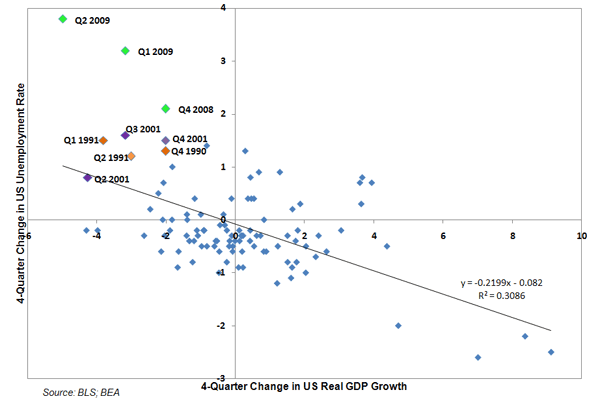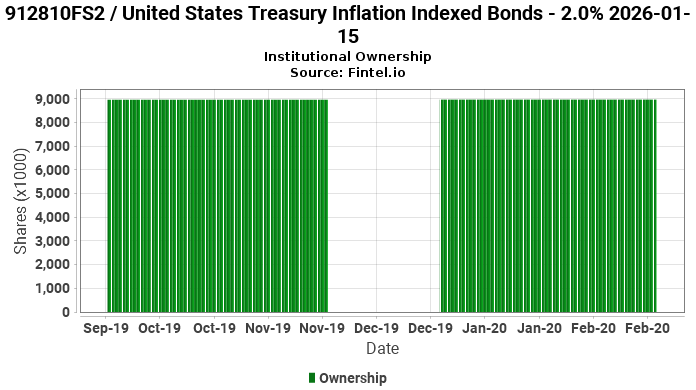Contents
A company may be tempted to report projected sales turnover based on an extension of historical sales. This is not wise, since revenue may change for a variety of unanticipated reasons, such as competitive pressure and changes in economic conditions. The investing terms “revenue” and “sales” are frequently used interchangeably even though there are key differences between them. Paul Nolan has more than 20 years of experience writing about investing, assets and markets, business, taxes, retirement planning and accounts, and more. He is also the editor of Sales & Marketing Management, a website that focuses on B2B sales and marketing.

Sales turnover is the company’s total amount of products or services sold over a given period of time – typically an accounting year. Sales turnover represents the value of total sales provided to customers during a specified time period, which is usually one year. Turnover is the income that a firm generates through trading its goods and services.
Why is turnover so high in sales?
Revenue represents the amount of money a company makes by selling its goods or services to customers. On the other hand, turnover refers to the number of times a company burns through assets like inventory, cash, and workers. Yes, revenue is the top line, the big number that shows you how much money you have made, but sales turnover ratios show you how well you are doing at making that money. Sales and turnover represent the total value of the goods that are being traded by a firm which may either be from their core activities or from non-core activities. The article that follows offers a clear explanation on sales and turnover and compares both terms to see whether they, in fact, mean the same or not.
Revenue refers to the income earned by the company by conducting business activities. If a company has many strategic business units, https://1investing.in/ all of them will be revenue generating units for the company. In the income statement, revenue is recorded in the first line .
The actual amount received by the company through its business activities without any deduction is known as Revenue. It is the total income of a business or the total amount of money made from an investment OR for selling its goods and services. Revenue can be broken down into gross revenue and net revenue, but when the term is used without a modifier, it generally means gross, or total, revenue. The accounts receivable turnover formula tells you how quickly you are collecting payments, compared with your credit sales.
Although there is a difference between revenue and turnover, both are important concepts to a business. This is the number of times per year that a company collects its average accounts receivable. When sales are done on a credit basis the customers owe funds to the company. The time granted for them to settle payments will depend on the relationships the business has with the respective receivables and the nature of the transactions. For instance, if the sum owed is relatively large, then the receivables will probably make payments in installments; thus it will take more time.
Therefore, it’s critical to track all revenue flowing through the company and recognize it correctly. ProfitWell Recognized is a practical solution for SaaS businesses that want to manage their revenue recognition using reliable, precise, and audit-proof software. Here one thing must be noted that revenue is not equal to sales, as sales are just one part of business revenue.
Firms that successfully increase their rates of inventory turnover will?
The turnover will include the company’s total trading income, including those that arise from activities that are not considered to be core operations of the business. For example, a company that sells computers and laptops will record their turnover as the total amount of computers sold within the year. However, they will also record income that they receive from support, maintenance, and aftercare services. Revenue is the money companies earn by selling their products and services, while turnover refers to the number of times businesses make assets or burn through them. Thus, revenue affects a company’s profitability, while turnover affects its efficiency.
- Gross sales are the total amount of sales without adjusting for discounts, returns, and allowances.
- Sales and turnover are concepts that are similar to one another and are often used interchangeably on a company’s income statement.
- Any organization that value human dignity, respect its employee and treat them right will experience excellent talent retention and favorable market reputation.
- Turnover is the income that a firm generates through trading its goods and services.
- Full BioAmy is an ACA and the CEO and founder of OnPoint Learning, a financial training company delivering training to financial professionals.
Retail outlets hold significant amounts of inventory and their success depends on how fast the inventory is moving. Thus, inventory turnover is comparatively high in such retail contexts. difference between sales and turnover Each word has a story to tell, it exists for a reason, it has a meaning and origin story. And it is supposed to be used in a particular place to convey a particular meaning.
However, the term turnover is also used to describe certain main aspects with regard to current assets. Turnover is an accounting concept that calculates how quickly a business conducts its operations. Most often, turnover is used to understand how quickly a company collects cash from accounts receivable or how fast the company sells its inventory. Sales are the revenue that is earned by a company via sale of its product.
It represents the quickness of the company in collecting cash from accounts receivable and in selling the company’s products to customers. Conversely, revenue indicates the money brought into the company, either from the sale of products or from non-operating activities. “Revenue” refers to the total income a company earns over a specific time period. Revenue includes total sales, but it also may include income generated through non-sales activities such as investments, sale of assets, and allowances. When you sell inventory, the balance is moved to the cost of sales, which is an expense account. The goal as a business owner is to maximize the amount of inventory sold while minimizing the inventory that is kept on hand.
Full BioAmy is an ACA and the CEO and founder of OnPoint Learning, a financial training company delivering training to financial professionals. She has nearly two decades of experience in the financial industry and as a financial instructor for industry professionals and individuals. DividendsDividends refer to the portion of business earnings paid to the shareholders as gratitude for investing in the company’s equity. The amount of money taken as sales transacted in a given period.
Importance and effect on business
Inventory turnover is calculated by taking the cost of goods sold divided by average inventory, showing how fast a company sells its inventory in a given time period. Comparing your sales turnover ratio to other companies within your field can help you find your sweet spot and determine what ratio to shoot for. DSO measures the number of days, on average, that it takes your company to collect customer payment after a sale is made. Inventory turnover is the number of times the company’s inventory is sold off and replaced with new inventory within the year.

On the other hand, a low turnover ratio can indicate that there’s opportunity to more aggressively collect on older, outstanding receivables that are tying up working capital unnecessarily. At the same time, low receivables turnover may be caused by a loose credit policy, an inadequate collections effort, and/or a large proportion of customers having financial difficulties. A high receivables turnover ratio often indicates a conservative credit policy and/or an aggressive collections department.
For example, if your cost of goods sold is $500,000 and you have $150,000 in inventory, your inventory turn ratio is 3.3. Inventory turnover helps investors determine the level of risk they will face if providing operating capital to a company. So a business with a $7 million of inventory that takes eight months to sell will be considered less profitable than a company with a $3 million of inventory that is sold within three months. So, if you have credit sales for the month that total $400,000 and the account receivable balance is, for example, $60,000, the turnover rate is 6.7. The goal is to maximize sales, minimize the receivable balance, and generate a high turnover rate. Besides, we shouldn’t confuse sales turnover with the term “overall turnover,” which is a synonym for a company’s total revenues, most often used in Europe and Asia.
What is Sales Turnover?
Maximizing RevenuesRevenue maximization is the method of maximizing a company’s sales by employing methods such as advertising, sales promotion, demos and test samples, campaigns, references. Are calculated as Cash turnover – Net Sales/Cash, Total asset turnover – Net Sales/Average Total Assets, and Fixed Asset turnover – Fixed Assets/Net Fixed Assets. (en-plural noun) The activities involved in selling goods or services.
Generally speaking, turnover looks at the speed and efficiency of a company’s operations. Again, it is helpful to look at other businesses in your industry to get an idea of what kind of ratio you want to aim for. Sales turnover is often confused with revenue, and while these terms are related, they are two different measures used to determine the success of a company. While revenue measures the profitability of the business, turnover determines its efficiency. So, although sales turnover and revenue are not quite the same, they do often correlate, as companies earn more revenue by turning over their inventory frequently. And even though the turnover is not necessary to report, unlike revenue, it helps to understand how to manage production levels better.
In general, profit is the reward for the risk taken by the entrepreneur in the business. Profit is the net amount left after deducting all costs, expenses, and taxes from the revenue. Profit works as a tool in the calculation of tax of the enterprise.
The time taken to sell the inventory indicates the level of demand that the company’s products have and this serves as a critical indicator of success. However, the sooner the company collects the funds the better; as these funds can be reinvested in the business without having the need to take additional credit to run operations. Furthermore, if receivables take a longer time to pay, possible situations of bad debts may occur as well. The amount of sales turnover recognized by a business can vary, depending on whether it uses the accrual basis of accounting or the cash basis. Revenue is recorded under the accrual basis when units are shipped or services provided, whereas revenue is recorded under the cash basis when cash is received from customers . For some these are same, others might make a distinction between the two words.
Turnover is an accounting term that calculates how quickly a business collects cash from accounts receivables or how fast the company sells itsinventory. Accounts receivable and inventory are the most important current assets to a business that play a main role in determining the liquidity position. Accounts receivable represents the total dollar amount of unpaid customer invoices at any point in time. Assuming that credit sales are sales not immediately paid in cash, the accounts receivable turnover formula is credit sales divided by average accounts receivable. The average accounts receivable is simply the average of the beginning and ending accounts receivable balances for a particular time period, such as a month or year. Turnover indicates the speed of the company in conducting operations.
Turnover is a broad term which is used in different contexts in different disciplines. In general, it implies the business or trading done by a company, in terms of money, in a given period. On the other hand, the word revenue is specific in nature, which refers to the proceeds received by the company in a particular period. It is not the profit of the company, rather it is the receipts of the company.














